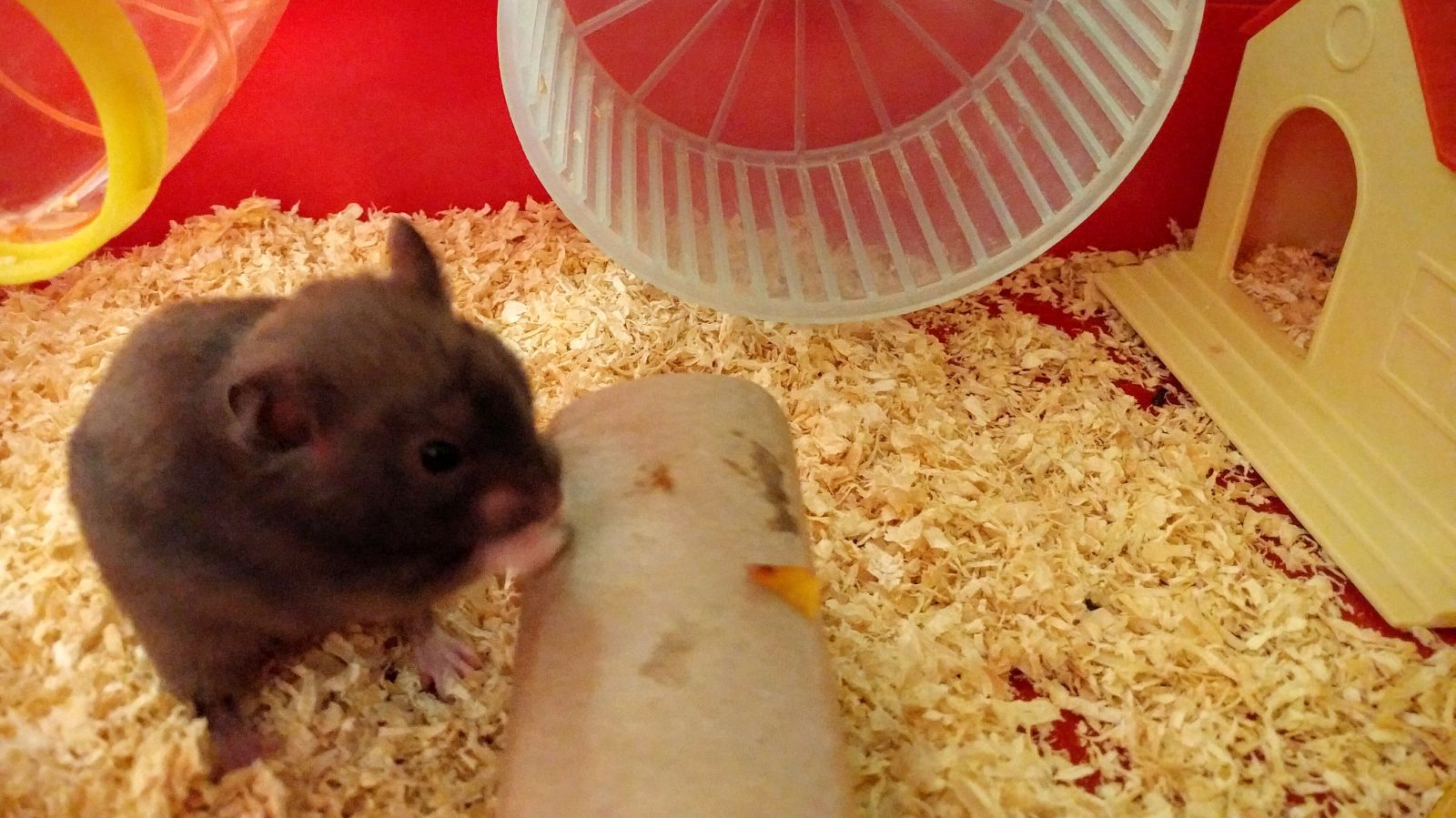The animated film An American Tail tells the story of a young mouse — Fievel Mousekewitz — who emigrates from Russia to the United States. But that fictional tale has nothing on the Syrian hamster emigration from Aleppo via Jerusalem to pet cages around the world.
According to scientists, all domestic Syrian hamsters are descended from one doe whose pups were brought to Jerusalem in 1930. Including Menchies, our month-old Syrian silver gray hamster named by our kids after their favorite North American frozen yogurt chain.
Hamster genealogy and tips on how to be a good hamster parent have quickly become the most popular SEO results in our family.
When we accepted Menchies as a gift from one of my son’s friends, whose hamster had just given birth to a litter of eight pups, we had no idea that this inquisitive rodent came with such a madcap history.
It turns out that Menchies is one of the innumerable descendants of a Syrian hamster family brought to Jerusalem 86 years ago by Israel Aharoni, a zoologist and professor at the Hebrew University of Jerusalem.
Aharoni, celebrated as “the first Hebrew zoologist,” is famous for discovering 30 previously unknown species of animals, insects and birds, and naming them.
He did not discover the Syrian hamster.
That distinction belongs to George Robert Waterhouse, a curator of the Zoological Society of London’s museum. Waterhouse named the Syrian hamster Cricetus auratus in 1839 but later it was changed to Mesocricetus auratus.
In 1930, Saul Adler, an Israel Prize winner and expert on parasitology, is said to have asked his colleague Aharoni to find an easy animal to breed for research for the infectious disease Leishmaniosis.
According to the book The Hamster: Reproduction and Behavior, Aharoni – together with a Syrian guide, Georgius Khalil Tah’an — found a hamster nest in the Aleppo region containing a doe and her pups. En route back to Jerusalem, the mother and some of the babies died. Aharoni raised the others by hand.
The hamsters were bred in Jerusalem as laboratory animals but some are said to have escaped from the cage through a hole in the floor. The fugitives went to live in the wild and the Israeli population of wild golden hamsters today is considered to be their descendants.
These untamed hamsters would be distant cousins of Menchies, an Israeli-born Syrian hamster with a white spot under his gray chin.

In 1931, some of the Hebrew University-raised Syrian hamsters were sent to Britain to the Wellcome Bureau of Scientific Research. A year later, new pups were sent from Jerusalem to the Zoological Society of London.
In 1937, pups born at the Zoological Society were transferred to private breeders. And in the early 1940s, Syrian hamsters were introduced as pets to the general public.
There are actually 26 species of hamster but the Syrian breed is the best known. They’re also the most common to be kept as “first” pets.
Wild hamsters in Syria, meanwhile, are extremely vulnerable today due to deliberate destruction and loss of habitat to farming. In 2008, the International Union for Conservation of Nature listed this burrowing cutie as endangered and at risk.
The Syrian hamster described by Waterhouse had yellow fur and became known as the golden hamster. However, Syrian hamsters come in a range of hues nowadays and pet stores call them by cuddly-fun-to-adopt names including golden hamster, fancy hamster, honey bears, panda bears, black bears, teddy bears and even Dalmatian.
While pet stores will sometimes try to convince new pet owners that Syrian hamsters like company, they’re actually solitary animals and prefer separate housing. If you do decide upon adopting two, remember that the Syrian hamster has the shortest gestation period of any hamster, just 16 days.
How Menchies’s family history traces from Jerusalem to London and back to Tel Aviv remains a mystery. Truth be told, we don’t think he cares.
















